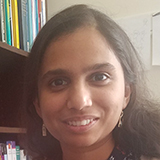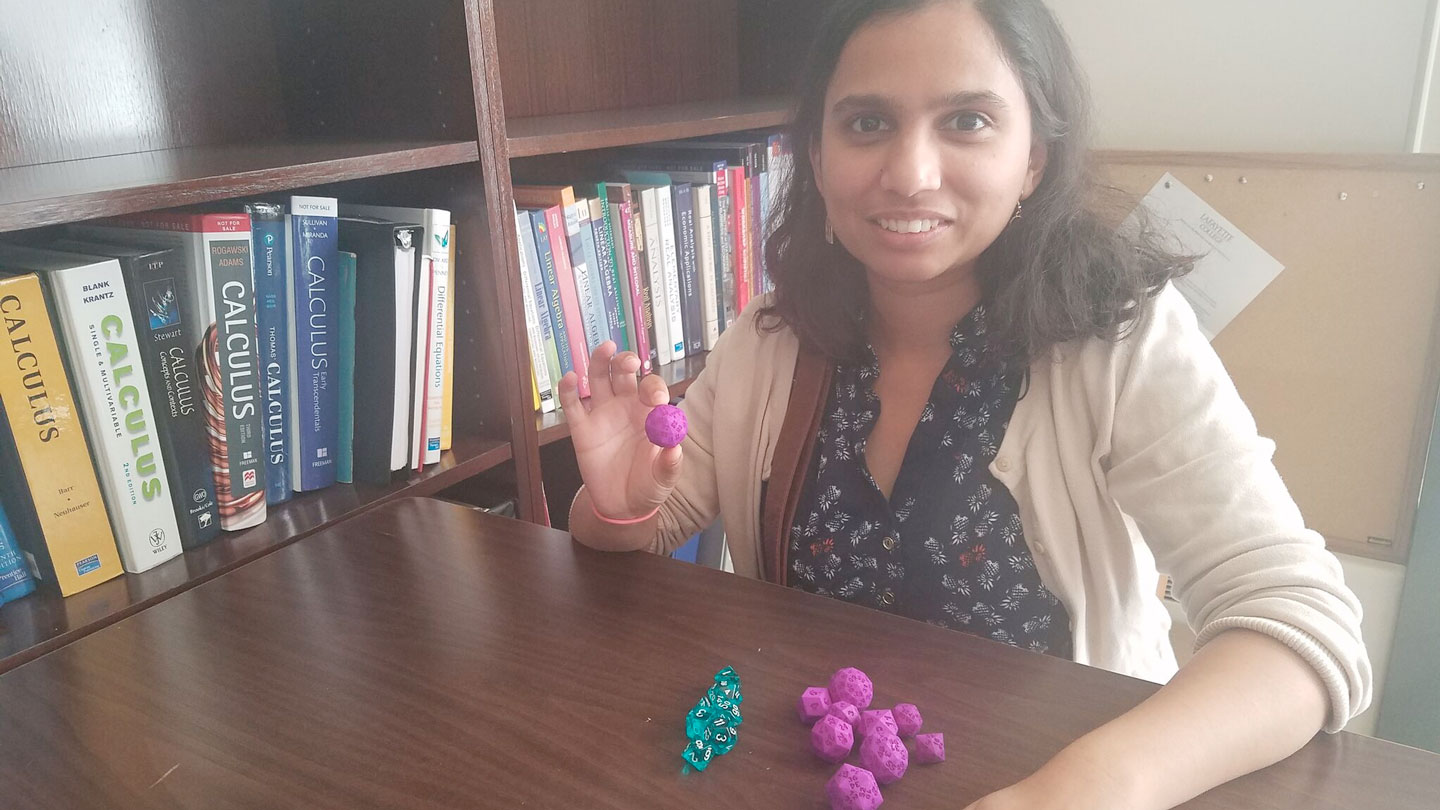Notice of Online Archive
This page is no longer being updated and remains online for informational and historical purposes only. The information is accurate as of the last page update.
For questions about page contents, contact the Communications Division.

visiting assistant professor of mathematics
Ph.D., mathematics, University of Stony Brook
What I study:
“Topology, the study of the shape of things. Geometry is the study of shapes, but in topology you focus on the intrinsic property of the shape, without worrying about measurements. One area I’m working on is connecting algebraic topology with probability and statistics. It’s a new field. Topology is also useful in data analysis; its tools for understanding shapes can be used to find underlying structure in data. I am a pictorially minded person. I love math, and I love patterns, especially visual patterns. That’s what got me involved in topology in the first place.”
What compelled me:
“I want to share my love of math. I think that there are a lot of misconceptions about mathematics education. Everyone focuses on the usefulness of mathematics, and for good reason—it is useful. But if you just focus on the usefulness, you lose sight of its beauty. One analogy I use is language. Language is useful, but the usefulness of language doesn’t overshadow its beauty. We are still interested in literature and poetry. One of the reasons I wanted to become a math educator is that I wanted to share the beauty of math.”
What I’d like to do:
“I would like to use art and music in mathematics education in some way. I trained as a dancer growing up, and rhythm was an important part of my life. I always felt that my love for rhythm and math was somehow connected in my brain as a child. And as an adult, it become clear—they are both all about patterns. I taught a class at a summer camp at Stony Brook where we used binary numbers to express beat and rhythm. I really enjoyed that and would like to do more of that work in the future.”

What I’m holding:
“Typical dice are cubes with six faces. These are polyhedral dice, which is a three-dimensional generalization of a polygon. Some of these are platonic solids, which means that they have a unique property that in a three-dimensional space, every face and every vertex and every edge looks the same. There are only five shapes that have this property. The rest of the dice are Catalan solids. A friend of mine made the purple set for me. He did all of the 3D modeling. They’re less symmetric in that all the faces need to look the same, but the edges and vertices may look different. It turns out that this is all that you need to make the shape a fair die. I find it very interesting, and the symmetries are mathematically beautiful.”
Categorized in: New Faculty

